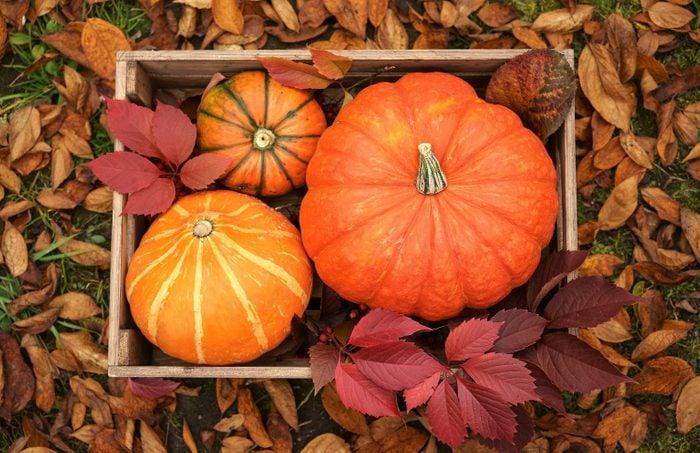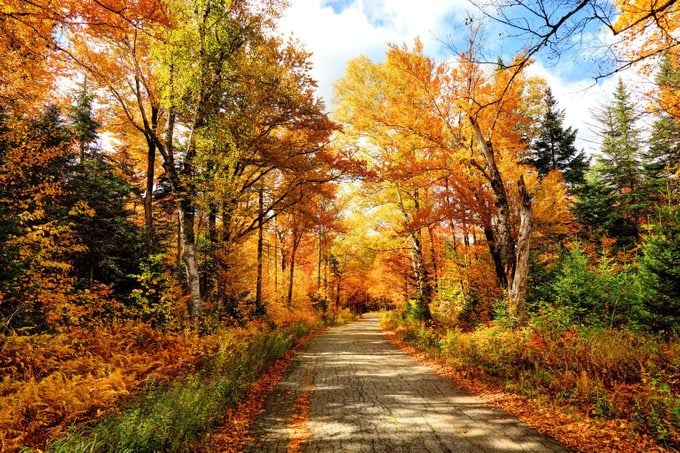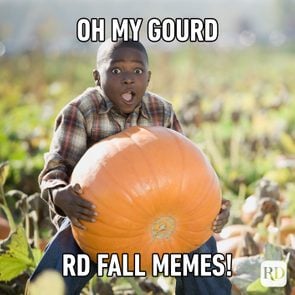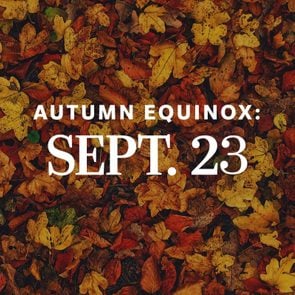When Is the First Day of Fall 2023? Fun Facts About the Fall Equinox
Updated: Mar. 14, 2024

Ready for sweater weather? Read on for surprising facts about the first day of fall, aka apple-picking and leaf-peeping season.
Suddenly in the mood to read fall quotes, look at autumn-inspired pictures and plan fun fall activities? We can’t say we blame you, as the season is fast approaching! Come September, you can reset your daylight saving time and you’ll be starting your fall reset plan, reviewing your seasonal home-maintenance checklist and, if you’ve got a case of wanderlust, planning a trip to see the eye-catching fall foliage. But how much do you really know about the first day of fall? When does it usually occur, and what causes the shift from summer to fall anyway?
Turns out, there’s plenty of fun information about the first day of fall and the fall equinox. Brush up now, before it arrives!
Get Reader’s Digest’s Read Up newsletter for seasonal insights, humor, cleaning, travel, tech and fun facts all week long.
When is the first day of fall in 2023?
The first day of fall in the Northern Hemisphere is Saturday, Sept. 23 this year. The fall equinox will specifically happen at 2:50 a.m. Eastern Daylight Time. From there, the Northern Hemisphere will get less direct light from the sun, and it will get chillier by the week.
When does the first day of fall usually take place?
The autumnal equinox typically takes place on the 22nd or 23rd of September, but there are some exceptions. The equinox occurred on Sept. 21 in 1931 and the year 1000, and it’s set to land on the 21st again in 2092. Don’t hold your breath for a Sept. 24 equinox, though; fall won’t officially begin on that date until 2303.
The date varies from year to year due to the Gregorian calendar, which defines a year as 365 days, while it takes the earth 364¼ days to completely orbit the sun.
What is the fall equinox, anyway?

The word equinox is Latin for “equal night,” and it’s the date when, in most places on earth, the daylight lasts just about as long as the nighttime. The fall equinox specifically marks the midpoint between the summer solstice in June, when Northern Hemisphere days are their longest (up to 24 hours without the sun setting in the polar regions), and the long, dark nights of the winter solstice in December, when the sun never rises in the polar regions.
On the fall equinox, the center of the sun is above the horizon for exactly 12 hours. But we consider the sun to be rising when the lip of it just comes into view, which can happen a few minutes before the center; at sunset, even once the sun’s center has dipped below the horizon, it takes a few more minutes for the rest of it to disappear.
Plus, according to timeanddate.com, during the moments at the very beginning of the sunrise and the very end of the sunset, when there’s only a tiny bit of the sun visible to us, we’re actually seeing the image refracted by earth’s atmosphere. It bends the light around to us even before earth has rotated far enough for the edge of the sun to clear the horizon.
Fun facts about the fall equinox
The sun goes south during the fall equinox
At the moment of the equinox, when the sun’s rays are concentrated on the side of the earth, the sun is directly above the equator. Fall in the Northern Hemisphere begins just as the earth progresses a little bit farther on in our orbit—the sun’s radiation then focuses more on the Southern Hemisphere (where spring begins) and keeps bathing the earth’s southern half in extra light until the next equinox, in March.
Satellites may get disrupted during the first day of fall
Although eggs don’t behave much differently on the first day of fall, some satellites are vulnerable to disruptions—lots of them orbit around the equator, so when the sun is shining directly on them on the equinox, the unusual amount of solar radiation can lead to slow internet connections and staticky radios, according to National Geographic. These “sun outages” can happen during the days before and after the equinox too, and they usually only last a few minutes.
Mayan astronomers marked the fall equinox
Although the first day of fall doesn’t attract quite the modern celebrations that the spring equinox and the summer solstice do, the ancient Mayans really played it up: At Chichén Itzá on the Yucatán peninsula, the Pyramid of Kukulkán (also known as El Castillo) is a pyramid with 365 steps—that’s one for each day of the year. On the fall and spring equinoxes, a shadow appears on the pyramid’s surface that looks like a serpent descending the steps toward a stone head at the bottom.
Jewish High Holy Days fall near the autumn equinox
The date for the Jewish New Year comes 163 days after the first day of Passover, which is coordinated with the spring equinox in March. Because of that, it tends to be near the first day of fall. In 2023, Rosh Hashanah begins Sept. 15 and leads to Yom Kippur (starting the evening of Sept. 24 in 2023), or the Day of Atonement—the holiest day of the year.
People in the northern hemisphere are more likely to see the Northern Lights during the fall equinox
Scientists say that at the September equinox, the chances of catching the Northern Lights increase for those located in the northern hemisphere. The equinoxes are the best time for the Northern Lights because geomagnetic activities are twice as likely to occur during autumn and spring rather than winter or summer. Snap a photo of the lights to post with a picture-perfect fall caption.
Sources:
- The Old Farmer’s Almanac: “Autumnal Equinox 2023: The First Day of Fall”
- Miami Herald: “Why do people try to balance eggs upright during the spring equinox?”
- National Geographic: “Chichén Itzá”
- National Geographic: “Equinox”


